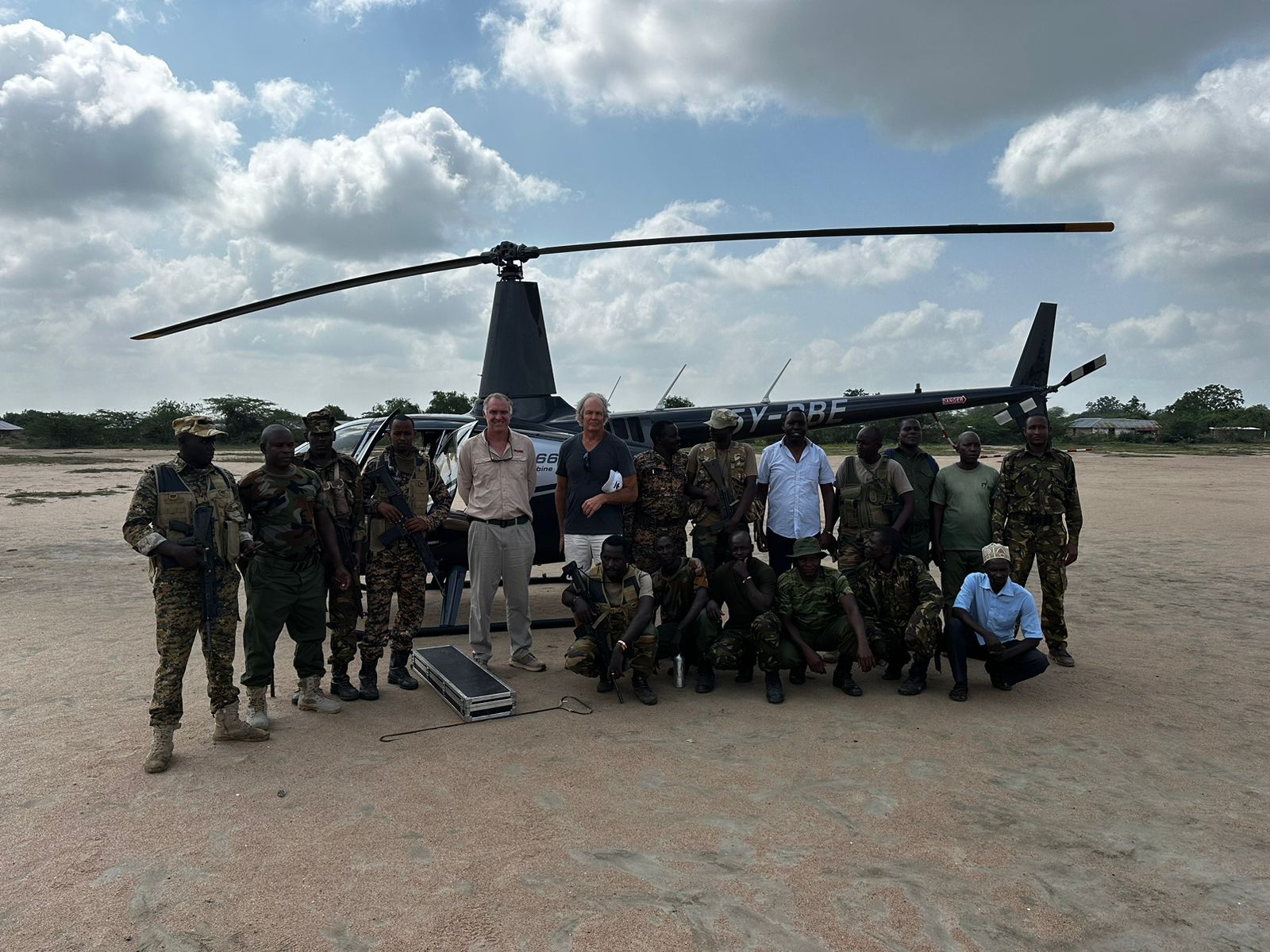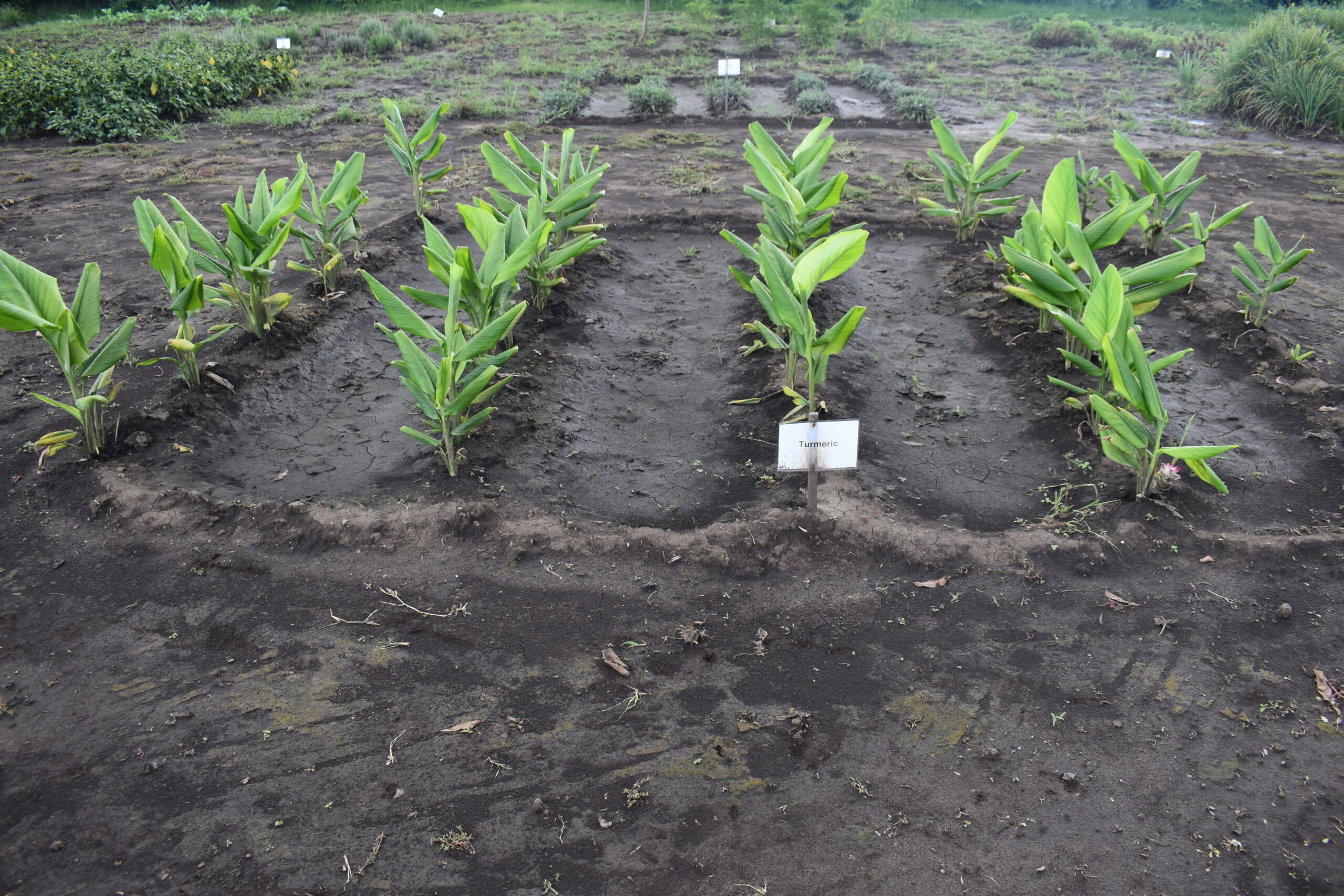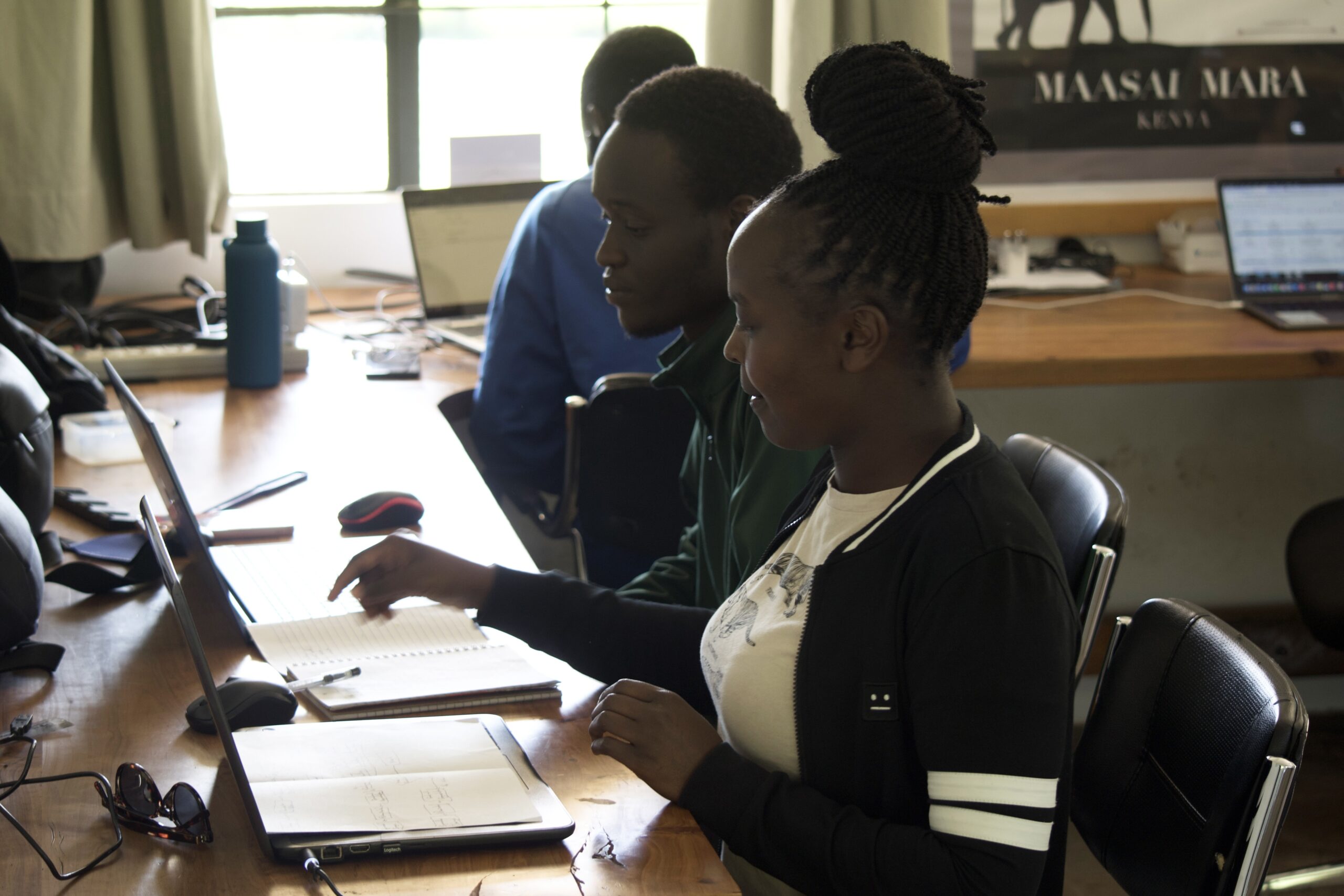In January, the heavy rainfall created complex situations for Mara Elephant Project rangers and researchers to navigate. Many of our areas of operation were inaccessible to vehicles and motorbikes, and MEP has never been more grateful for the nine drones we deploy, which allowed us to continue our mitigation and monitoring efforts despite the rain. During the month, we received a request from Kenya Wildlife Service (KWS) to rapidly respond to elephants regularly crop raiding in the Naisuya area near the Mau Forest. We deployed the mobile ranger team with two Mavic 3T drones to monitor the herd at night to observe the herd of 35’s movements inside the forest which enabled our effective response the next day to move them out of the farm.
Also in January, MEP Special Projects Manager Wilson Sairowua deployed a drone to move three bulls found inside farms after the community called to ask for help and the area couldn’t be accessed by vehicle. These are just two examples of how useful drones have become to MEP. A special thanks to Romageco Kenya Limited popularly known as ‘Robs Magic’ and Elephant Cooperation for generously supporting MEP with the Mavic Enterprise 3 drones used in the above situations.
Also in January, the MEP ‘Foxtrot’ ranger team had a first-time drone experience, when a herd of elephants they were monitoring had just minutes beforehand welcomed a new member to their family. The rangers after deploying the drone to monitor this herd for injuries, discovered a just born calf under his mother’s belly.
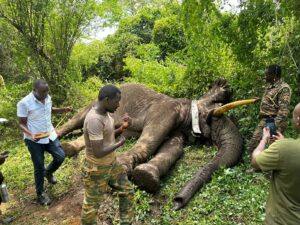 Since 2011, the Wildlife Research and Training Institute (WRTI), KWS and MEP have deployed satellite tracking collars on over 80 elephants across Kenya to rapidly respond to conflict, deter poaching and monitor their movements to inform our habitat protection efforts. On January 9, alongside KWS Vet Dr. Bernard Rono, a bull elephant was fitted with a collar in Tana River County, a new area of monitoring for KWS, WRTI and MEP. The wildlife and communities living in this area are experiencing similar challenges to the Mara, infrastructure and agricultural expansion and high levels of conflict. The bull, named “Tino”, will be a pioneer elephant and his movements will inform conflict mitigation response and allow for rapid response by KWS rangers on the ground. MEP CEO Marc Goss assisted the KWS team in the air and was joined by pilot Rob Walker in an R66 Robinson helicopter, who generously supported the flying time for this collaring operation.
Since 2011, the Wildlife Research and Training Institute (WRTI), KWS and MEP have deployed satellite tracking collars on over 80 elephants across Kenya to rapidly respond to conflict, deter poaching and monitor their movements to inform our habitat protection efforts. On January 9, alongside KWS Vet Dr. Bernard Rono, a bull elephant was fitted with a collar in Tana River County, a new area of monitoring for KWS, WRTI and MEP. The wildlife and communities living in this area are experiencing similar challenges to the Mara, infrastructure and agricultural expansion and high levels of conflict. The bull, named “Tino”, will be a pioneer elephant and his movements will inform conflict mitigation response and allow for rapid response by KWS rangers on the ground. MEP CEO Marc Goss assisted the KWS team in the air and was joined by pilot Rob Walker in an R66 Robinson helicopter, who generously supported the flying time for this collaring operation.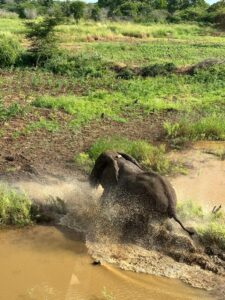 Shortly after his collaring, MEP responded to a request from KWS to deploy the helicopter to move collared elephant “Tino” out of farms. MEP CEO Marc Goss used the helicopter to move Tino back to safety and we continue to assist our partners in this area.
Shortly after his collaring, MEP responded to a request from KWS to deploy the helicopter to move collared elephant “Tino” out of farms. MEP CEO Marc Goss used the helicopter to move Tino back to safety and we continue to assist our partners in this area.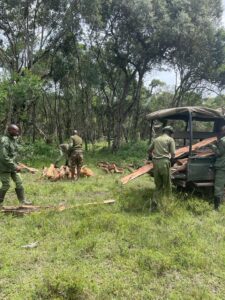 In January, the MEP “Golf” ranger team together with KWS and Oloisukut Conservancy rangers led joint patrols in the Nyakweri Forest and surrounding areas. They responded to a conflict incident, moving a herd of 15 elephants out of maize farms, and had several successful logging busts amounting to the arrest of 17 total suspects illegally logging in the area.
In January, the MEP “Golf” ranger team together with KWS and Oloisukut Conservancy rangers led joint patrols in the Nyakweri Forest and surrounding areas. They responded to a conflict incident, moving a herd of 15 elephants out of maize farms, and had several successful logging busts amounting to the arrest of 17 total suspects illegally logging in the area.
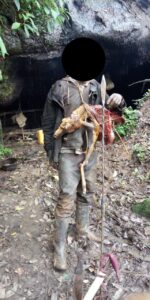 Also in January, the MEP / SWT Mau De-Snaring Unit alongside KWS, Kenya Forest Service (KFS) and the Bongo Surveillance Project (BSP) removed 15 snares inside the Mau Forest. Snares are used to poach bushmeat, for either personal or commercial use, and often wildlife like antelopes are the target however larger wildlife like elephants can be harmed if a snare wraps around their legs or trunk. The two teams operating in the Mau were responsible for 75% of the total snares removed in 2023.
Also in January, the MEP / SWT Mau De-Snaring Unit alongside KWS, Kenya Forest Service (KFS) and the Bongo Surveillance Project (BSP) removed 15 snares inside the Mau Forest. Snares are used to poach bushmeat, for either personal or commercial use, and often wildlife like antelopes are the target however larger wildlife like elephants can be harmed if a snare wraps around their legs or trunk. The two teams operating in the Mau were responsible for 75% of the total snares removed in 2023.
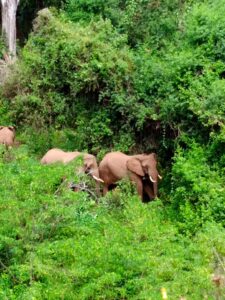 The Marmanet Forest is located a little over 100 km north of the Mau Forest is home to an estimated 60 elephants, which MEP learned in 2019 after collared elephant Vasco moved from the Mau to Marmanet. Since his original movement, WRTI, KWS and MEP have collared three additional elephants in this area to better understand their movements and inform the rangers tasked with protecting the habitat and wildlife that call it home. On January 26, rangers monitored collared elephant Bea alongside a herd of over 20, which included several very new additions.
The Marmanet Forest is located a little over 100 km north of the Mau Forest is home to an estimated 60 elephants, which MEP learned in 2019 after collared elephant Vasco moved from the Mau to Marmanet. Since his original movement, WRTI, KWS and MEP have collared three additional elephants in this area to better understand their movements and inform the rangers tasked with protecting the habitat and wildlife that call it home. On January 26, rangers monitored collared elephant Bea alongside a herd of over 20, which included several very new additions.
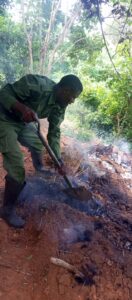 Another area outside of the Mara is the Shimba/Mwaluganje Ecosystem, which contains a lowland coastal forest home to a diverse selection of flora and fauna including several rare and endemic species and is an important dispersal area for elephants. Alongside the three collared elephants in this ecosystem, MEP deploys one wildlife ranger who works alongside Mwaluganje Elephant Sanctuary community scouts and KWS rangers to monitor elephants and respond to conflict and deter habitat destruction activities in the forest. In January, the team destroyed charcoal kilns, arrested four habitat destruction suspects and seized 57 illegal timber posts. The team will continue to work together to protect elephants and the ecosystem they call home.
Another area outside of the Mara is the Shimba/Mwaluganje Ecosystem, which contains a lowland coastal forest home to a diverse selection of flora and fauna including several rare and endemic species and is an important dispersal area for elephants. Alongside the three collared elephants in this ecosystem, MEP deploys one wildlife ranger who works alongside Mwaluganje Elephant Sanctuary community scouts and KWS rangers to monitor elephants and respond to conflict and deter habitat destruction activities in the forest. In January, the team destroyed charcoal kilns, arrested four habitat destruction suspects and seized 57 illegal timber posts. The team will continue to work together to protect elephants and the ecosystem they call home.
Overall, in January, MEP rangers alongside government partners arrested three bushmeat poaching suspects and six habitat destruction suspects. They confiscated 37 kg of bushmeat and removed 19 snares. They also confiscated 140 pieces of timber, 15 posts, destroyed four charcoal kilns and mitigated 13 conflict incidents. In January, MEP rangers covered a distance 1,623.76 km on foot and 7,993.52 km by car in the GME.
The MEP Research Department had a paper on elephant movement published in the journal Movement Ecology – Land use drives differential resource selection by African elephants in the Greater Mara Ecosystem, Kenya. The team used a resource selection function (RSF) approach to analyze ~1.3 million collected GPS datapoints to understand the selection preferences of elephants across three land-use zones (formerly protected, conservancies, and unprotected). We noted significant changes in elephant habitat preference, particularly with regards to vegetation. Notably, elephants most strongly selected high-canopy cover forest thickets and avoided open-areas. This selection preference was accentuated when in the unprotected areas presumably because of the visibility and human encounters. We received support from Google to run our analysis in the Google Cloud platform and use extremely high-RAM virtual machines.
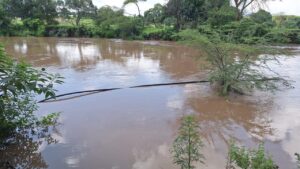 The high amount of rainfall in January also affected the daily work on the MEP Coexistence Farm and predation was actually reduced given the amount of thriving food sources available to wildlife in the conservancies. The rains caused the water level of the Mara River, running alongside the farm, to rise which was mostly caused by rains in the uplands. The farm team continues to work with our partners on the conservation school club initiative supported by Kampur Travel Diaries.
The high amount of rainfall in January also affected the daily work on the MEP Coexistence Farm and predation was actually reduced given the amount of thriving food sources available to wildlife in the conservancies. The rains caused the water level of the Mara River, running alongside the farm, to rise which was mostly caused by rains in the uplands. The farm team continues to work with our partners on the conservation school club initiative supported by Kampur Travel Diaries.
 The Fran Duthie African Elephant Conservation Scholarship overseen by MEP launched in 2022 with the inaugural recipient Janeth Jepkemboi starting her MSc in Environmental Studies in September 2022 at Karatina University. Now in her second, and final year, of the program, she’s focusing on her thesis. Janeth began her research internship at MEP HQ in January and is working on gathering the evidence needed to defend her thesis. Beyond completing her thesis work, Janeth has been learning about the work of MEP’s long-term monitoring team, and the suite of tools used for data collection and analysis, and we even had her join a visitor group. Thank you to every donor who has supported the scholarship fund, especially Fran and Lorne Duthie, for making it all possible.
The Fran Duthie African Elephant Conservation Scholarship overseen by MEP launched in 2022 with the inaugural recipient Janeth Jepkemboi starting her MSc in Environmental Studies in September 2022 at Karatina University. Now in her second, and final year, of the program, she’s focusing on her thesis. Janeth began her research internship at MEP HQ in January and is working on gathering the evidence needed to defend her thesis. Beyond completing her thesis work, Janeth has been learning about the work of MEP’s long-term monitoring team, and the suite of tools used for data collection and analysis, and we even had her join a visitor group. Thank you to every donor who has supported the scholarship fund, especially Fran and Lorne Duthie, for making it all possible.
Finally, thank you to all the 15 photographers who supported MEP in January in the Greatest Maasai Mara photo competition and to the Angama Foundation for their continued support of this conservation initiative.
